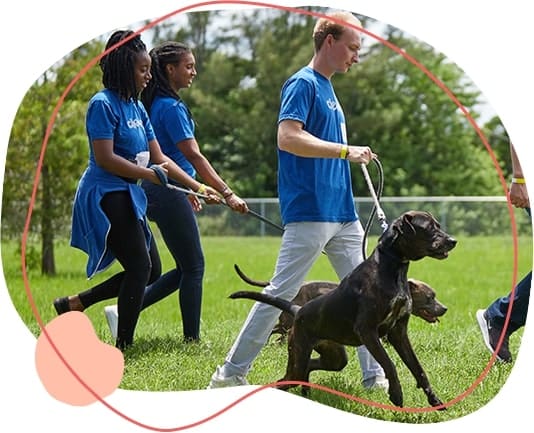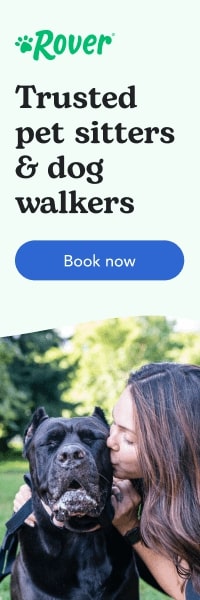If you’ve ever walked into your kitchen to find your dog’s food scattered across the floor, you’re not alone. Many dog owners have experienced the puzzling behavior of their canine companion tipping over their food bowl. While it may seem like a messy habit, there are several reasons your furry friend might be doing this. Understanding these reasons can help you address the behavior and make mealtime less chaotic for both of you.
Reasons Why Dogs Tip Over Their Food Bowls

1. Instinctual Behavior
Dogs are descendants of wolves, and in the wild, animals often move their food to a safe or preferred spot. Your dog might be tipping their bowl to simulate this instinctive behavior, spreading the food around to eat it where they feel most comfortable.
2. Dislike of the Bowl
The type of bowl you’re using could be the culprit. Some dogs dislike the texture, size, or even the noise their bowl makes. For example, metal bowls can create clanging sounds that may startle your dog. If the bowl is too deep or too narrow, your dog might struggle to eat comfortably, leading them to tip it over.
3. Boredom or Playfulness
Dogs are naturally curious and playful creatures. If your pup is feeling bored or wants attention, they might tip over their food bowl to turn mealtime into playtime. This behavior is especially common in younger dogs and puppies.
4. Seeking Attention
If tipping the food bowl has previously resulted in you reacting—whether with laughter, scolding, or cleaning up the mess—your dog might continue the behavior to get your attention. Dogs thrive on interaction, even if it’s negative.
5. Preference for Scattered Food
Some dogs simply prefer eating off the floor rather than from a bowl. This might be because it feels more natural to them or because it’s easier to eat this way.
6. Medical or Behavioral Issues
Occasionally, tipping over a food bowl could signal an underlying issue. Dental pain, discomfort while eating, or anxiety around mealtime could cause your dog to behave this way. If this behavior is new or accompanied by other changes, it’s worth consulting your veterinarian.
How to Stop Your Dog from Tipping Over Their Food Bowl
1. Choose the Right Bowl
Invest in a sturdy, non-slip bowl that’s designed to stay in place. Silicone or weighted bowls are great options to prevent tipping. Additionally, ensure the bowl is the right size and shape for your dog’s breed and eating style.
2. Use a Feeding Mat
Place the bowl on a non-slip feeding mat. This can provide extra stability and make it harder for your dog to move the bowl around.
3. Monitor Mealtime
Stay nearby while your dog eats to observe their behavior. If they attempt to tip the bowl, redirect their attention with a command like “leave it” or “no.” Reward them when they eat calmly without tipping.
4. Provide Mental Stimulation
If boredom is the cause, increase your dog’s mental and physical exercise. Regular walks, playtime, and puzzle toys can help reduce unwanted behaviors like bowl tipping.
5. Try Alternative Feeding Methods
Consider using a slow feeder or interactive feeding toy. These options not only prevent messes but also make mealtime more engaging for your dog.
6. Rule Out Medical Issues
If your dog’s bowl-tipping behavior is sudden or unusual, consult your veterinarian. They can check for dental problems, digestive issues, or other health concerns that might be causing discomfort during meals.
Frequently Asked Questions (FAQs)
1. Is it normal for dogs to tip over their food bowls?
Yes, it can be normal for some dogs. However, the reasons vary and could include instinct, playfulness, or discomfort. Observing your dog’s behavior can help you determine the cause.
2. How can I stop my dog from tipping their bowl?
Start by using a non-slip, sturdy bowl and placing it on a feeding mat. Monitor your dog during meals and address any underlying issues, such as boredom or discomfort.
3. Could tipping the food bowl indicate a health problem?
It’s possible. Dental pain, digestive issues, or anxiety could cause your dog to act out during meals. If the behavior is new or accompanied by other symptoms, consult your veterinarian.
4. Are certain breeds more likely to tip over their bowls?
While any dog can exhibit this behavior, playful or high-energy breeds like Labradors, Golden Retrievers, and Terriers might be more prone to it due to their curious and active nature.
5. Should I switch to hand-feeding if my dog tips their bowl?
Hand-feeding can be a temporary solution to build trust or manage specific behaviors, but it’s not a long-term fix. Instead, focus on addressing the root cause of the bowl-tipping behavior.
By understanding your dog’s behavior and making small adjustments, you can create a more enjoyable and mess-free mealtime for both of you. Remember, patience and consistency are key when addressing any canine quirk!













